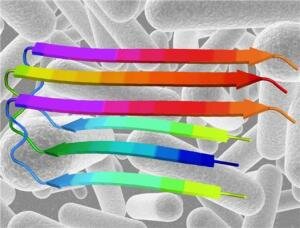New Discoveries in Cell Aging
by Dementia Today:Researchers have quantified with precision the effect of protein aggregation on the cell aging processes using as models the Escherichia coli bacteria and the molecule which is thought to trigger Alzheimer’s disease.Scientists have demonstrated that the effect can be predicted before it occurs. Protein aggregation is related to several diseases, including neurodegenerative diseases.The research, published recently in the Journal of Molecular Biology, provides an extremely reliable system with which to model and quantify the effect of protein aggregation on the viability, division and aging of cells. It also aids in further understanding the natural evolution of proteins. According to Salvador Ventura, researcher at IBB and director of the research project, “it will serve to develop computer approximations to predict the effects aggregation has on cell aging, as well as to search for molecules that act as natural chaperones, highly conserved proteins which are present also in humans and which have the ability to reduce this effect in the bacteria.”Although it is widely accepted that bad folding and aggregation of proteins reduces the cell’s ability to survive and reproduce, the damage caused had not been previously measured experimentally as precisely as it was in this research.In previous studies scientists had verified that the expression of the Alzheimer’s AB42 peptide in bacteria induces the process of protein aggregation. Now they have demonstrated that this effect is coded in the protein aggregation sequence and that it depends on intrinsic properties, not on a direct response from within the cell. This makes it possible to predict the effect. Scientists also demonstrated that damage caused to the bacteria is controlled by molecular chaperones, which reduce the tendency of proteins to aggregate and favour cell survival.In addition to researchers from IBB and the UAB Department of Biochemistry and Molecular Biology, participating in the project were scientists from the Biophysics Unit at CSIC-UPV, the University of the Basque Country, the Institute for Bioengineering of Catalonia and the Barcelona Centre for International Health Research.Source:Picture: Structure of the peptide inducing Alzheimer’s disease found in the bacteria used in the research. (Credit: Image courtesy of Universitat Autònoma de Barcelona)

